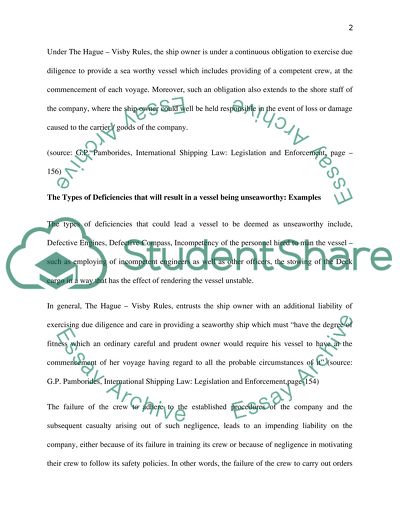Cite this document
(A Vessel Being Unseaworthy Report Example | Topics and Well Written Essays - 1500 words, n.d.)
A Vessel Being Unseaworthy Report Example | Topics and Well Written Essays - 1500 words. https://studentshare.org/engineering-and-construction/1546978-when-do-the-hague-visby-rules-apply
A Vessel Being Unseaworthy Report Example | Topics and Well Written Essays - 1500 words. https://studentshare.org/engineering-and-construction/1546978-when-do-the-hague-visby-rules-apply
(A Vessel Being Unseaworthy Report Example | Topics and Well Written Essays - 1500 Words)
A Vessel Being Unseaworthy Report Example | Topics and Well Written Essays - 1500 Words. https://studentshare.org/engineering-and-construction/1546978-when-do-the-hague-visby-rules-apply.
A Vessel Being Unseaworthy Report Example | Topics and Well Written Essays - 1500 Words. https://studentshare.org/engineering-and-construction/1546978-when-do-the-hague-visby-rules-apply.
“A Vessel Being Unseaworthy Report Example | Topics and Well Written Essays - 1500 Words”. https://studentshare.org/engineering-and-construction/1546978-when-do-the-hague-visby-rules-apply.


